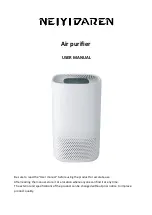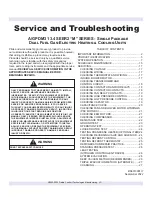
26
EN
Tools necessary for the installation
• Level indicator (hand level)
• Wrench
• Electric drill with a hollow bit (ø65 mm)
• Flaring tools
• Torque wrenches: 15 Nm 1/4" (6.35 mm), 25 Nm 3/8" (9.52 mm)
• Spanner (half union)
• Hexagonal wrench of suitable dimensions
• Gas-leak detector, Vacuum pump, Gauge manifold
• Thermometer, Multimeter, Pipe cutter, Measuring tape
• User’s manual
CONNECTION TO WATER SUPPLY MAINS
Connect the water pipeline system according to the attachment signs from the previous chapter (Fig. 1).
Installing a safety valve is mandatory in order to assure safe operation. The valve prevents an increase of the pressure in the
boiler by any more than 0.1 MPa (1 bar) above the nominal pressure. The outflow nozzle on the safety valve must have an
outlet into the atmosphere. To assure correct operation of the safety valve, check the valve regularly and, if necessary, remove
the limescale and check that the safety valve is not blocked. When checking the valve, push the lever or unscrew the nut of the
valve (depending on the type of the valve) and open the drain from the safety valve. Water must flow from the valve nozzle,
showing that the valve operation is faultless. During the heating of water, the water pressure in the hot water tank is increased
up to the level present in the safety valve. Since the system prevents backflow of water into the water supply mains, water may
be dripping from the outlet opening on the safety valve. The dripping water may be drained via trap into the drains; the trap is
mounted under the safety valve. The outlet pipe, which is mounted under the safety valve, must be directed downwards, in a
place with a temperature above freezing.
If the installation does not allow draining of the water from the safety valve into the drains, dripping can be avoided by installing
an expansion vessel onto the heat pump inlet pipe. The volume of the expansion vessel must be ca. 5% of the hot water tank
volume.
The heat pump is designed for connection to indoor water supply mains without using the relief valve if the pressure in the
supply mains is lower than prescribed on the appliance. If the pressure is higher, a relief valve needs to be installed so as to
provide that the pressure at the inlet to the hot water tank does not exceed the nominal pressure.
Figure 7:
Closed pressure system
In avoidance of aggregate damage the heat pump must not operate without water in the tank!
LEGEND
1 Stop valve
2 Relief valve
3 Safety non-return valve
4 Expansion tank
5 Drain valve
6 Flexible hose
H Cold water
T Hot water















































